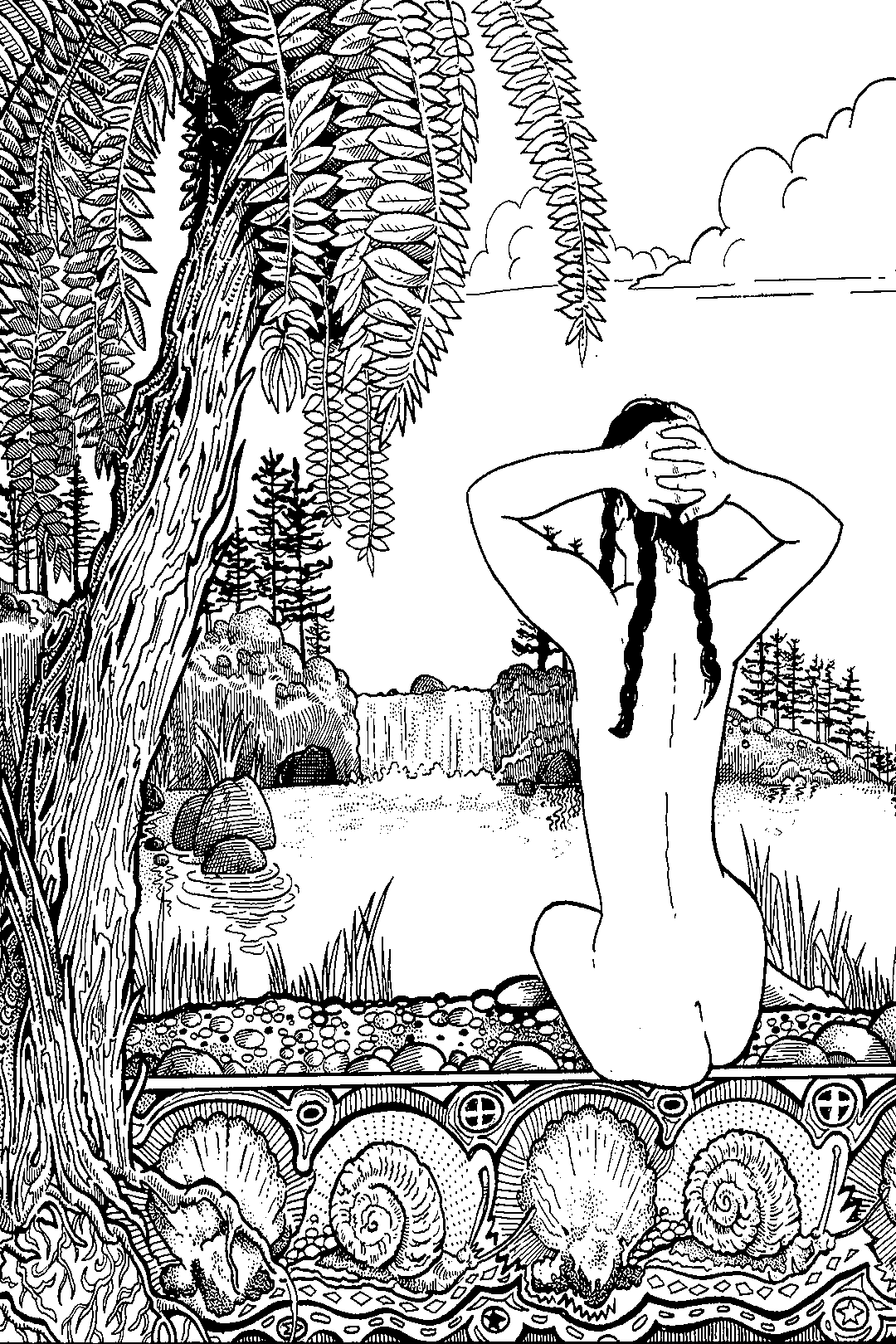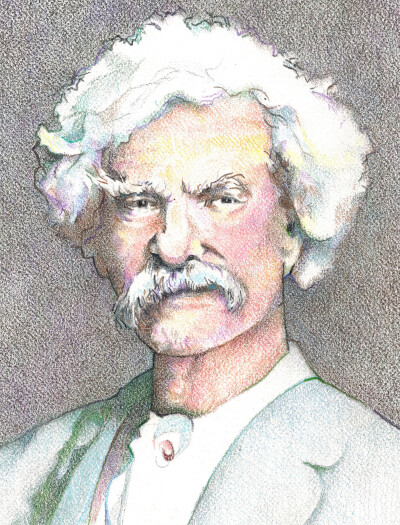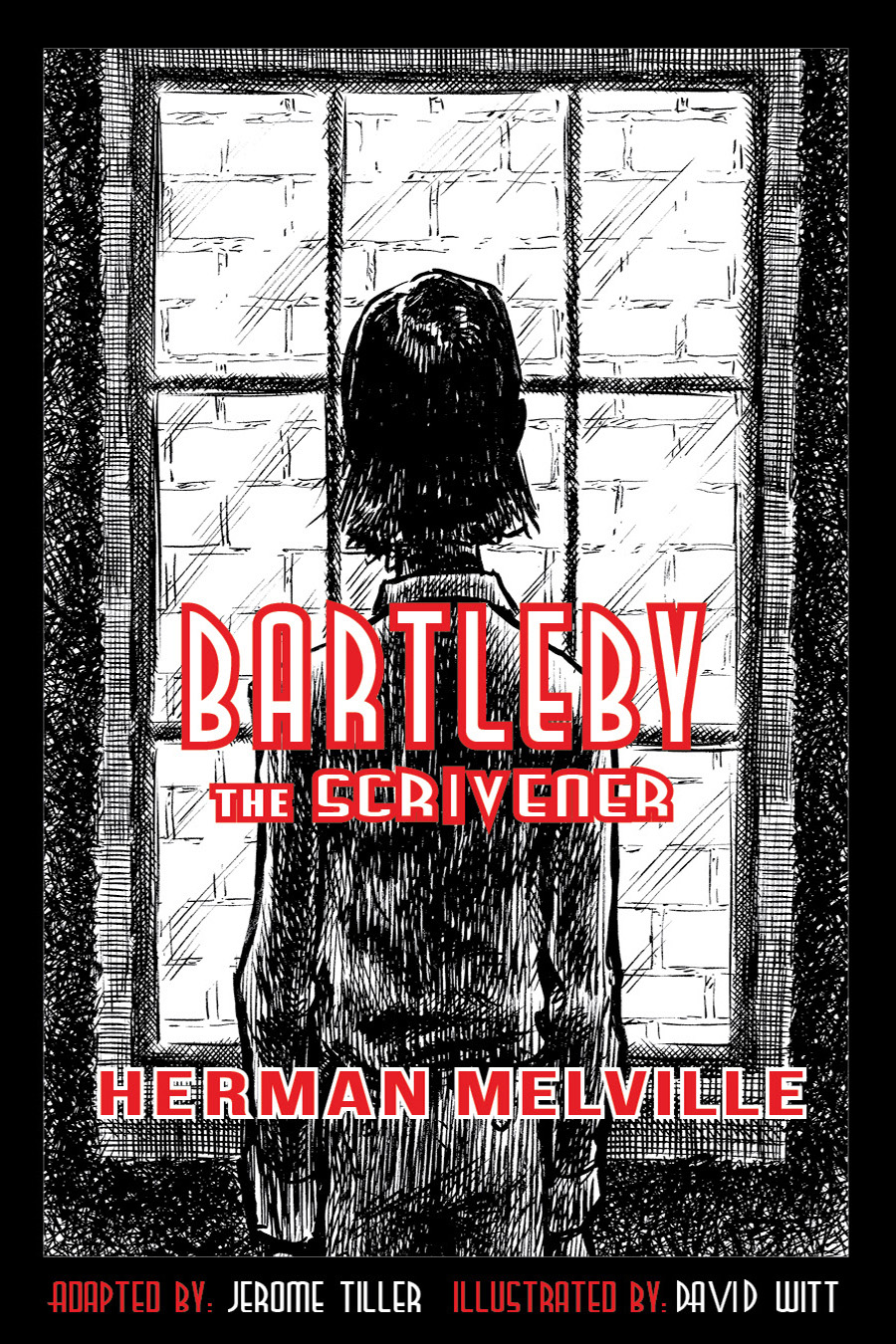blogpage
Literature for Middle School Students
by Jerome Tiller
Whether classic literature belongs in middle school classrooms is an open question. Some teachers probably believe the best way to encourage middle school students to read is to assign them books they want to read, with a few obvious exceptions. If they want to read Captain Underpants, give it to them. If they want to read Harry Potter, give it to them (and by all means, give them all and every one of those fine books you can). But classic literature? Middle-school students don’t want to read stories about mostly adult characters living in the distant past. Why force the issue?
This opinion strongly persuades, at least to a point. Everyone wants middle school students to enjoy reading so that they...
Hawthorne Stories for Middle School
by Jerome Tiller
Bundling illustrated Hawthorne stories for middle school made for pleasant work. That’s because Nathaniel Hawthorne tells great stories that illustrate well. Quite frankly, we believe kids and their parents should read them. We think who wouldn’t like Hawthorne stories, especially when masterfully illustrated by Marc Johnson-Pencook? So, we went and did it. We published Hawthorne Illustrated, a volume of three Hawthorne on August 31, 2018. Middle school readers will happily soak up these stories if only parents would point, maybe nudge them, to drink from the great classics well.
Speaking of wells, Dr. Heidegger’s Experiment leads the combined three stories we are talking about. I suppose underground spring would be a more accurate term than well when describing the central feature of...
Illustrated Books Cover Middle-School Readers
by Jerome Tiller
Publishing experts maintain that covers sell books, including covers that sell illustrated books, but that wouldn’t matter to middle-school readers. They have no money to cover the cost of books. But even if they had money, would they go and spend it on a book anyway? So what does designed-to-sell-sell-sell book covers mean to them-them-them?
If parents were to bring home a book they bought for their middle-school reader after they went and spent their money on the book because the outside cover sold them on the inside content, lets hope their middle-school reader also likes the cover, and then maybe they might also enjoy the content, which they likely will if the imagery on the cover is literally incorporated into...
Eve and Adam - Female Objectification
by Jerome Tiller
When it comes to female objectification, Eve and Adam have nothin’ to offer those who want to know why males objectify females. Mark Twain didn’t directly delve into that topic when he wrote his creation stories. But he did recreate the first heterosexual couple, and he did exaggerate certain gender-specific tendencies in each character. Readers in his day would have recognized these masculine and feminine tendencies as legitimate.
After all, Mark Twain was anything but stupid. He built his humor on the bedrock of exaggeration and understatement. And you know he understood how to use those comic devices! He knew it wouldn’t be funny for him to assign, and then exaggerate or understate, gender-related tendencies that didn’t mesh with what his readers had experienced in real life. But he did not choose to directly deal with the matter of female objectification, a male tendency the readers of his day would also have recognized as legitimate. He didn't deal with it, but he certainly could have. Female objectification is not a brand new phenomena. It has been around for far too long.
Fans of Adam Redux - Reconsidering Eve
by Jerome Tiller
Fans of Adam might want us to reconsider Eve and apologize for our insults and the violent trip we suggested they take over a waterfall. In anticipation of their desires, we will.
Apologies first. Eve was concerned for reckless Adam’s safety. She pressured him to stop going over a waterfall. Like Eve, we are non-violent. So we retract our suggestion that Fans of Adam go over a waterfall in a barrel like Adam did. As far as we are concerned, jumping in a lake is usually safe, so we will stick with that suggestion. Go jump in the lake.
As for our insult, were you to object, you would probably be referring to the ‘big baby’ charge we leveled adaptedclassics.comst you. But if...
Midwest Book Review Recommends "Eve and Adam”
by Jerome Tiller
Midwest Book Review recommends “Mark Twain’s The Diaries of Eve and Adam”. You will find their review posted on the Literary Shelf in the October 2017 edition of their e-magazine. It is the first comment we have heard about our newly published book for middle-school readers. Thankfully, it’s a positive one. And we are thankful exactly six times over that Midwest Book Review likes all the books in our Adapted Classics collection of timeless stories for middle-school readers.
That someone finally commented on the book pleases us. However, the reviewer disappointed us by quoting Adam's downer observation about death as the example of Twain’s funny, positive story. The short excerpt the reviewer used does not reflect the tone of the story at...
Middle-Grade vs. Middle-School - A Difference in Terms
by Jerome Tiller
One might think, as I did, that ‘middle-grade’ means ‘middle-school’ and no difference exists between the terms. I discovered, only recently, that I was wrong. Book publishers define the middle-grade range as 8-12 years of age. They group one-third to one-half of the younger students in middle school (grades 6-8) with students in mid-to-late elementary school. Book publishers place the remaining group of older middle-school students with high schoolers in a category called ‘young-adult’. They define the young-adult age range as 13-18 years.
According to book trade companies that publish fiction, certain words and content topics define the two categories. Fiction books for ‘middle-grade’ readers shouldn’t contain profanity, graphic violence, or sexuality. All of this type of content would be allowable...
Middle School Students - Learning by Talking
by Jerome Tiller
When middle schools students discuss the meaning of literature under the direction and supervision of a teacher, they are learning by talking. Classroom discussions about the meaning of stories help middle school students develop new ideas, organize and clarify their thoughts, and express them verbally. Besides these lessons in mental and communication skills, classroom discussions about literature also help middle school students learn valuable life lessons. Quality literature can carry an abundance of such lessons.
The trouble is, most of the skills middle school students learn by talking about the meaning of literature cannot be quantified. Middle school students might develop their brains and learn life lessons when they talk about literature, but they merely internalize those benefits. No standardized test...
Illustrated Classic Literature for middle schoolers?
by Jerome Tiller
Can you imagine a parent rejecting the purchase or loan of a book of illustrated classic literature for their middle school reader because picture books are for little kids? You should be able to imagine this because it probably happens all the time. Major book publishers and booksellers have seen sales of illustrated books slump during the past couple of decades. They speculate parents are responsible for the decline in sales. They think parents point kids to chapter books early on because they want their kids to rapidly advance in school. And of course, eventually succeed as adults in a highly competitive world. Might these parents then reject illustrated literature and prefer chapter books without due consideration for content? So...
Nathaniel Hawthorne - A Serious Man and a Funny Guy
by Jerome Tiller
Did you know Nathaniel Hawthorne was both a serious man and a funny guy. Many people who think of him as nothing but a great moralist should read “Mr. Higginbotham’s Catastrophe”. Hawthorne told it in a light, humorous vein, and he didn’t use it to deliver a great moral message. But as for serious—well, this story is…seriously funny. And seriously sweet!
Unusual though this story is coming from Nathaniel Hawthorne, Edgar Allan Poe, a contemporary of Hawthorne and a renowned literary critic, praised “Mr. Higginbotham’s Catastrophe”. He described it as “vividly original and dexterously managed”. Other critics have favorably compared Dominicus Pike, the story’s main character, to Ichabod Crane, the main character in Washington Irving’s “The Legend of Sleepy Hollow”. Both...
Mark Twain’s Eve and Adam - Gender Stereotypes?
by Jerome Tiller
When Mark Twain developed the characters Eve and Adam in his creation stories, did he rely upon and perpetuate gender stereotypes? Although most of the people who have read and reviewed “Eve’s Diary” like the story, some readers found fault with Twain’s portrayal of Eve, especially after she began taking an interest in Adam. Twain took on a daunting task when he decided to fictionalize the story of creation. He must have known his characterizations of Eve and Adam, the very first human creatures, would be seen as archetypes for all succeeding generations of both genders of humans. Confidants of Twain knew he wrote “Eve’s Diary” as a eulogy to his beloved wife Olivia. Consequently, Twain did not intentionally slight Eve in any way, and definitely not as a gender stereotype, when he developed her character.
View/download free pdf version of the Diaries of Eve & Adam (scaled for mobile & ipad devices)
Poe's Hop-Frog - Middle-School Lesson Plan
by Jerome Tiller
I imagine Edgar Allan Poe’s Hop-Frog would fit well in some middle-school lesson plan. I can only imagine, however. Today’s lesson plans are probably tied closely to education standards and achievement tests. I am not a teacher. I do not know enough about the teaching vocation to speak authoritatively about standards or testing. Still, if teachers have the flexibility to use literature to stir classroom discussion, 'Poe’s Hop-Frog' has much going for it as a vehicle for that.
I discussed objections to exposing middle-grade readers to 'Hop-Frog' in two earlier posts. To reiterate, just because Hop-Frog, a very sympathetic character, violently revenges maltreatment by his tormentors does not mean that violent revenge is justifiable. Whether revenge can ever be justified, however,...
Adapting Eve & Adam - Intentions and Principles
by Jerome Tiller
Issues regarding intentions and principles loomed while adapting “Mark Twain’s The Diaries of Eve and Adam”. I was concerned that Eve’s character could change if I added new material to combine two separate stories by Twain. But I gave myself leeway to add material because I had no intention to change Eve’s character. Heck, I would not intentionally change any aspect of any character created by Mark Twain. My sole motive in adding new material was to keep dialogue going between Eve and Adam from beginning to end. I tried to keep Eve’s character in line with Twain’s Eve by closely considering what Eve had to say in her diary before the fall, along with the few things she had to say...
Promote Pleasure Reading in Young People
by Jerome Tiller
Studies by the U.S. Department of Education have shown the overall amount of pleasure reading by young people has steadily declined. There are many theories why this is so, including those that point to trade-offs and time constraints; young people abandon pleasure reading to focus instead on digital devices or to use what once had been free time to expend extra effort in meeting the regimented demands of an achievement culture.
Yet everyone knows that young people will seek and find fun wherever it can be found – it’s their natural instinct. Then what if they were to find more fun in pleasure books at their reading level? Like the fun they once found in the picture books of their...
Revealing Illustrated Literature - Mark Twain's The Diaries of Eve and Adam
by Jerome Tiller
Eve and Apple
ArtWrite Productions will publish "Mark Twain's The Diaries of Eve and Adam" on June 30, 2017. It will be the sixth book in our Adapted Classics collection of illustrated literature. We are happy to announce this will be the first time we publish an Adapted Classics book in both hardcover and softcover.
Near the end of his life, Mark Twain wrote a series of six stories commonly known as the ‘Adamic Diaries’. Four of the stories poke fun at Christianity and are dark in tone. These stories were not published until after Twain died in 1910. Two of the six stories in the series were published as illustrated books while Twain lived—Extracts from Adam’s Diary...
Dr. Heidegger's Experiment - Topics For Teachers to Explore
by Jerome Tiller
As indicated in our last post, this marks our first blog that suggests topics teachers might want to explore in classroom discussions involving stories in the Adapted Classics collection. The first book we published in the collection is Nathaniel Hawthorne’s Dr. Heidegger’s Experiment, and there are lots of topics teachers might want to explore in this one.
You might ask why Dr. Heidegger conducted the experiment. What did he hope to find out? The subjects in the experiment might trigger other questions. All of them were old friends of the doctor, so we know Dr. Heidegger knew them and and that he was probably also aware of their rather ignoble pasts. Were they useful subjects for what he hoped to learn from...
Fiction and Classroom Discussions
by Jerome Tiller
Some of the best classroom discussions led by teachers in my early school years involved literary works, usually fiction. Teachers found fiction to be especially fertile ground for classroom discussions because no student could ever truly be right or wrong. Students knew they were entitled to their own opinions about themes, characterization, motives, etc. Everybody had their own interpretation about the stories, and nobody would tell them that theirs were wrong. Classroom discussions about fiction often got students who rarely spoke-up in class to offer their opinions. Students were safe with fiction. They couldn’t be wrong.
We select, adapt, and design stories for the Adapted Classic collection with classroom discussions in mind. Even the illustrations by Mark Johnson-Pencook, though primarily attention...
Fiction can enlighten while it entertains
by Jerome Tiller
In our last post, shade was thrown on the idea that fiction can enlighten a reader. The post also contains the suggestion that reading to be informed is worthwhile while reading fiction merely entertains - and that it doesn't do such a very good job of that compared to numerous alternatives.
Setting aside the opinion that reading fiction is an inferior way to entertain oneself, let’s deal with the issue of enlightenment. First of all, we probably need to clear up what might be some confusion in terminology. Knowledge and enlightenment are not synonymous. Insofar as information contains real (not fake) facts, acquiring and storing information adds to one's knowledge. Enlightenment is the result of 'getting it' - the 'it'usually being understanding that...
Illustrations Enhance the Appeal of Classic Stories
by Jerome Tiller
The idea was that we would add illustrations to classic stories to enhance their appeal. Middle-grade readers would see the books on a library or classroom shelf, fan the pages, see the vivid, often humorous illustrations, and give the old stories a try. The stylish prose in finely crafted stories by master authors would then captivate middle-grade readers. They would attain a greater interest in the language of their lives - that which they hear and speak and write. And literature! Our thin, little books with illustrations might be the first plunge many middle-grade readers take into the deep world of literature. The books might even serve to spur life-long habits of reading fiction for pleasure and enlightenment in some middle-grade readers who give...
Arthur Rackham v. Marc Johnson-Pencook
by Jerome Tiller
Arthur Rackham (September 19. 1867 – September 6, 1939) was one of the pre-eminent illustrators in what is known as “The Golden Age of Illustration”. This age was primarily a British phenomena. It lasted about 30 years, roughly from 1890 until 1920. Arthur Rackham’s art work, at first in pen and ink only but soon in color as well, graced many books for children from 1893 right up until his death in 1939. In the “Tales of Mystery and Imagination”, the Poe collection referenced in our February 1st blog, he contributed 40 illustrations, 12 in color and 28 in pen and ink.
Arthur Rackham inspired Marc Johnson-Pencook and influenced his development as a major talent in the modern age of illustration. Compare the...



